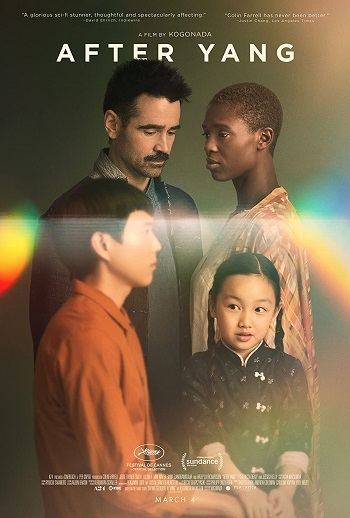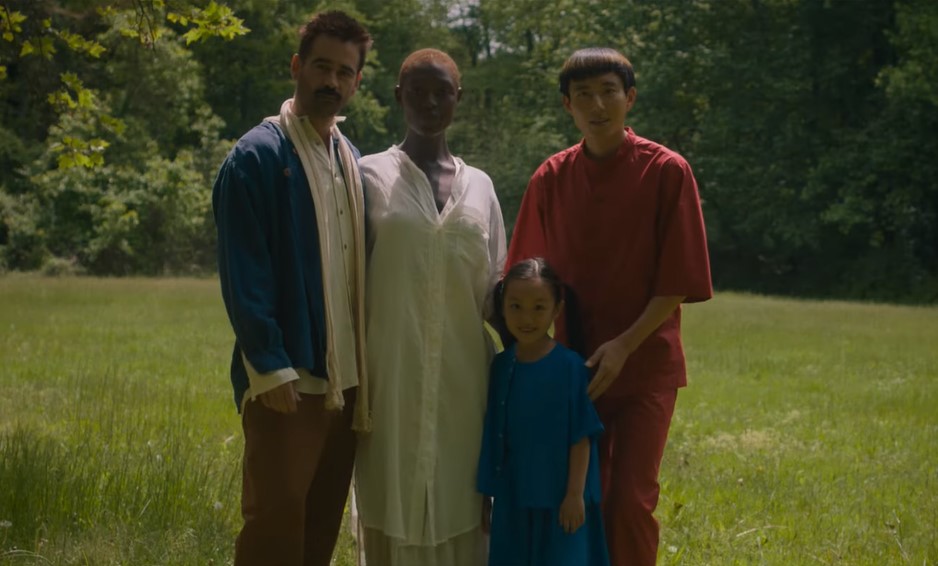In the captivating sci-fi film “After Yang,” the central character is a fascinating technosapien named Yang, portrayed with remarkable depth by Justin H. Min. Far beyond being just a piece of advanced technology, Yang assumes multiple roles in the lives of his owners, becoming a tutor, babysitter, surrogate sibling, and an all-knowing repository of knowledge akin to a personalized Wikipedia. The profound emotional bond that forms between Yang and his human companions is nothing short of heartwarming.
However, this heartwarming connection takes a poignant turn when a glitch in Yang’s mainframe causes him to go dark, leaving his owners grappling with a tidal wave of emotional confusion. Young Mika, tenderly played by Malea Emma Tjandrawidjaja, reacts to this disruption with the same anguish one would feel if their beloved pet were hospitalized. The film beautifully captures the innocence and sincerity of Mika’s feelings, elevating the story’s emotional resonance.
As the story unfolds, we follow Jake, portrayed by the versatile Colin Farrell, who finds himself thrust into an unforeseen journey alongside his daughter. Their destination is a futuristic version of a Best Buy, a place that symbolizes the film’s exploration of a world filled with advanced technologies and their profound impact on human connections.

Kogonada’s Masterful Direction
However, writer-director Kogonada, known for his previous work on “Columbus,” approaches the subject of artificial intelligence with a refreshing curiosity rather than a pessimistic outlook. He skillfully explores how AI could reshape the very fabric of our relationships, prompting intriguing questions about memory, humanity, and the interplay between nature and nurture. The heart of the narrative revolves around an investigation into Yang’s past, triggered by a playlist of Vine videos that serves as the foundation of his consciousness.
Throughout the film, Kogonada deftly weaves metaphoric functions for the robot, presenting a multifaceted exploration of human experiences. However, one of the most poignant aspects is Yang’s role as a walking, talking embodiment of the adoption experience, particularly for individuals born into one culture and raised in another. This emotional layer tugs at the heartstrings, enriching the story’s thematic depth and making it a truly moving cinematic experience.
In “After Yang,” the boundaries between humans and technology blur as Kogonada guides audiences through a journey of self-discovery and empathy. With its contemplative and nuanced approach to the potential impact of AI on our lives, the film stands out as a profound and thought-provoking piece of cinema, urging viewers to ponder the essence of what it means to be human in a world increasingly intertwined with advanced technologies.

Dystopian Vision Depicted In a Mesmerizing Way
In “After Yang,” the dystopian vision depicted possesses a mesmerizing and aesthetically captivating allure. The film skillfully employs elements like chic architectural design, warm gel lighting, and the play of city lights on a windshield to paint a tantalizing picture of a future America, where diverse cultures harmoniously blend—a true melting-pot society. One could aptly liken this visual feast to an “Ozu by Apple” aesthetic, exuding a unique blend of classic Japanese filmmaking sensibilities with a touch of contemporary elegance.
The movie’s serene ambiance is both its strength and potential drawback, with the tranquility at times veering close to overindulgence. Only the spirited and whimsical synchronized dance routine in the opening credits momentarily disrupts the film’s melancholic slumber, injecting a burst of energy into the narrative.
Yet, amid this tranquil veneer, there lies a deeply stirring soul within Yang’s very circuitry. The specter of a poignant tearjerker sweeps through Kogonada’s cinematic machinery, infusing the film with moments of emotional resonance. Particularly evident is Colin Farrell’s masterful portrayal, where he employs a strategically subdued performance, artfully concealing lines of heartache beneath a sleekly composed exterior. The contrasting layers of vulnerability and restraint in Farrell’s acting beautifully exemplify the complexities of human emotions and add a profound sense of depth to the character.
Through its mesmerizing visual palette, meditative tone, and nuanced performances, “After Yang” delivers a thought-provoking exploration of the human condition, intertwined with the implications of artificial intelligence in a futuristic world. Kogonada’s directorial finesse gracefully navigates the realms of emotion and technology, leaving the audience with lingering reflections on the delicate balance between humanity and the evolving digital landscape.

What Other Critics’ Says
"After Yang is a meditative exploration of loss and identity in the context of a technologically advanced world. Kogonada's direction artfully balances human emotions with futuristic elements, creating a film that lingers long after the credits roll." - The Hollywood Reporter
"Colin Farrell's subdued and powerful performance anchors After Yang, serving as the emotional core of this thought-provoking and visually arresting sci-fi drama." - IndieWire
"Kogonada's adaptation of Alexander Weinstein's short story beautifully contemplates the complexities of love and memory, asking profound questions about what it truly means to be human." - Variety
Final Verdict
“After Yang” (2021) is a mesmerizing and intellectually engaging cinematic experience that transcends genre conventions. Kogonada’s masterful direction, coupled with Colin Farrell and Jodie Turner-Smith’s exceptional performances, breathe life into a story that explores universal themes of loss and humanity. With its captivating visuals, introspective storytelling, and philosophical musings, “After Yang” will leave audiences with lingering reflections on the nature of existence and the bonds that define us.
